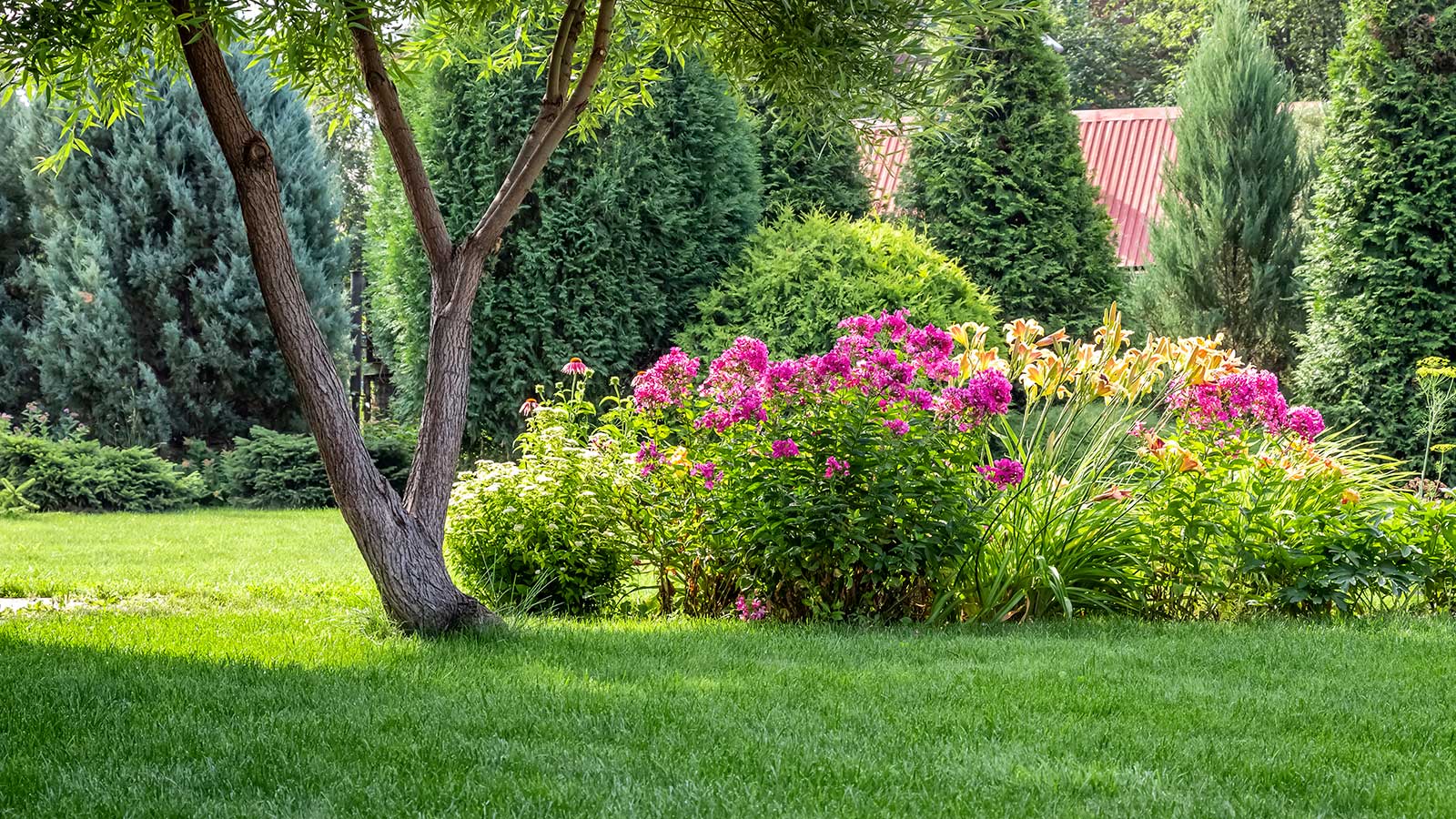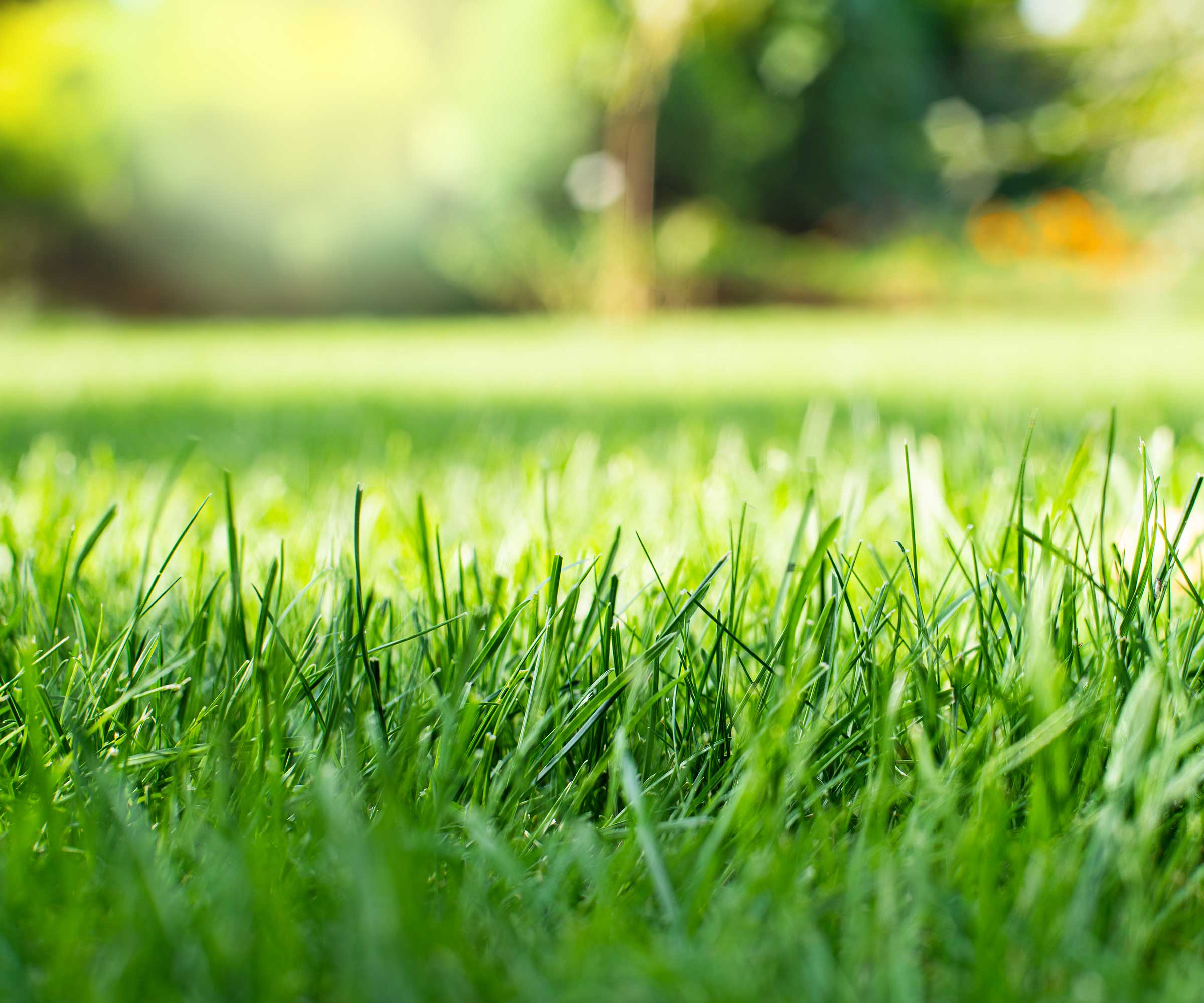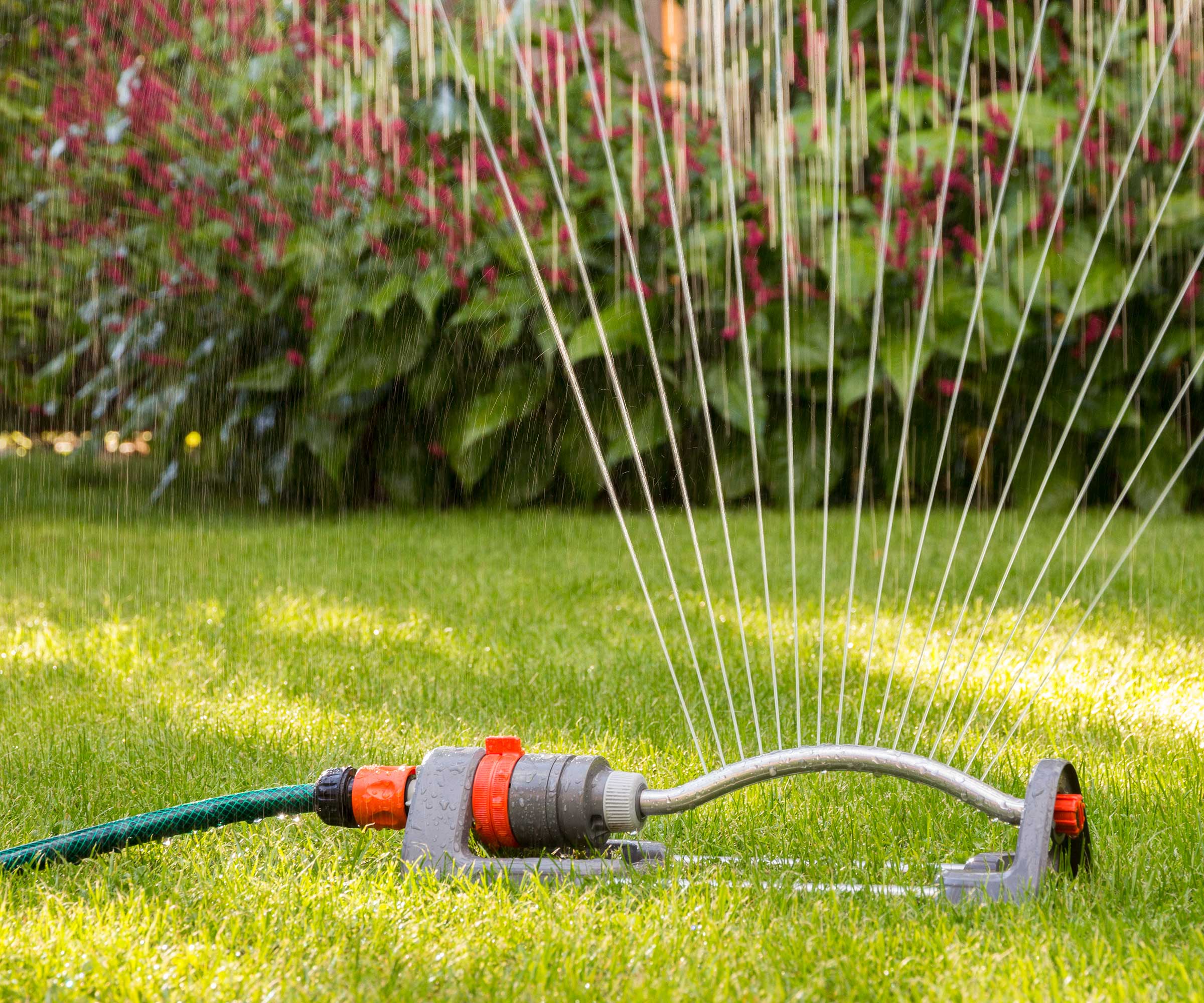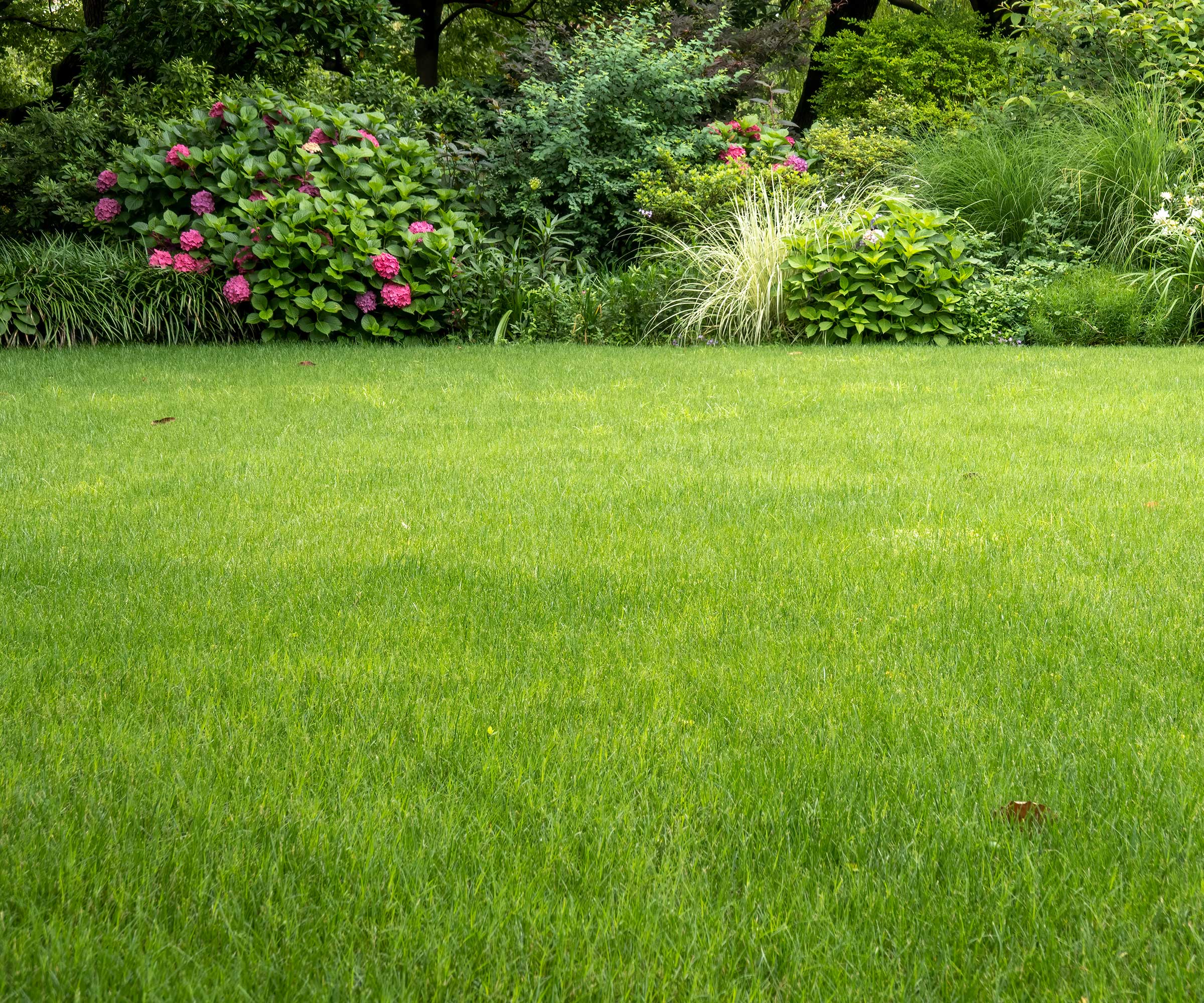
Many of us love a hot day, but blazing sunshine and sweltering temperatures can spell stress for our lawns. Lush green turf can quickly deteriorate under such conditions, which is why it's important to get the know-how on preparing and protecting it.
While proper summer lawn care practices are key in keeping grass healthy throughout the warmer months, the intensity of heatwaves can call for an extra dose of diligence. Sara Bendrick, landscape contractor and Stihl spokesperson, explains that hotter temperatures can be particularly harsh on lawns because they rapidly increase moisture loss from both the grass and the soil. 'Prolonged heat stresses the turf, often pushing it into dormancy where it turns brown to conserve resources,' she says. 'This not only affects the lawn’s appearance, but also makes it more vulnerable to weeds, pests, and diseases.'
The good news is, there are several ways to protect and grow grass in hot, dry weather. Below, experts share their advice on what you should and shouldn't do, including practical watering tips.
Prepare your lawn before the heatwave sets in

If you know there's a heatwave on the horizon, there are ways to get your lawn prepared. Sara recommends watering it deeply a few days before the heat sets in – 'this promotes deeper root growth and better drought resilience,' she says.
Fertilizing it, on the other hand, should be avoided. Although it may seem like a sensible way to give your lawn a last-minute boost, she explains that new growth demands more water, which will be in short supply during extreme heat.
Consider your lawn mowing techniques, too. Ahead of a heatwave, Matthew Koch, a lawn expert from ScottsMiracle-Gro, recommends keeping the grass at its tallest recommended height, which improves drought and heat tolerance. Sara adds that leaving grass clippings on the lawn will act as a natural moisture barrier.
Keep your lawn hydrated

Overlooking the importance of hydration is a big lawn care mistake during hot weather. Ryan Walts from Lawn Squad notes how, under normal, non-drought weather conditions, watering every other day for 20 to 30 minutes per area of the lawn is typically enough to help satisfy the lawn’s water requirements.
However, during periods of heat or drought, he says it may be necessary to do it daily and to increase the duration of the watering cycles to 45 to 60 minutes per area of the lawn.
Brandon Seymour, owner of Floridist Sod Installation & Lawn Treatment Services in Florida, recommends using your best judgment: 'If the turf is graying and thinning out, or if you can easily see your footprints, chances are it's too dry and needs water.'
You can also check the soil moisture by probing about four to six inches down, says Sara. 'If it's dry at that depth, it’s time to water again.'
The time of day you water your lawn is worth considering, too. 'It’s best to water your lawn during the early morning hours (ideally between 4 a.m. and 9 a.m.) as temperatures are cooler, which means less evaporation and more water absorption,' points out Sara.
This also ensures the grass dries out during the day, she notes, which reduces the risk of fungal diseases.
'Smart irrigation systems or programmable hose timers are great tools to ensure consistent early-morning watering, even during busy weekdays or if you’re away,' Sara adds. 'For larger properties, consider drip or subsurface irrigation to increase water efficiency during drought conditions.'

This well-rated timer allows you to adjust the start time, duration, and frequency of watering, making lawn upkeep easier in hot weather.
With its 20 nozzles, this oscillating sprinkler can cover up to 4,500 sq ft of lawn. It's easy to adjust the area you want to water, and the zoom function means you can hone in on a patch of lawn that needs more attention rather than watering the entire lawn.

This lightweight hose is great for watering lawns as it is easy to move around, and provides a gentle spray. Plus, it would work for other parts of the yard too.
Other ways to protect your lawn during a heatwave

Just like when preparing your lawn for a heatwave, avoid any temptation to mow too low once temperatures have soared. Dethatching or aerating should be skipped altogether – 'these disrupt the soil and roots just when the lawn needs stability,' warns Sara.
Brandon recommends steering clear of any fertilizers or herbicides that could burn your lawn, too. 'Many product labels have temperature restrictions, so that's something to always be mindful of on warmer-than-average days,' he says.
And while heatwaves can seem like the perfect time to make the most of our lawns, it's best to avoid walking on them too often when temperatures are at their peak. As Ryan explains, repeated foot or vehicle traffic can injure tender plant parts and cause soil compaction, which is when soils compress and become hard.
'Compacted soil restricts water, air, and nutrient movement within the soil profile where grass roots grow, and restricted access to these vital elements can hinder water absorption and root growth.'
Top tip: 'For small or sensitive areas, temporary shade cloths can be used to reduce direct sun exposure,' notes Sara.
FAQs
Are some grass varieties more tolerant of heatwaves than others?
It's always worth considering your climate when choosing and planting grass seed. According to Sara, cool-season grasses like fescue and bluegrass are more likely to go dormant, while warm-season varieties like Bermuda can handle heat better but still benefit from protective practices.
How can you help your lawn recover after a heatwave?
Hopefully, your lawn will get through the hottest weeks of the year unscathed. But if it ends up looking a little worse for wear, give it time to bounce back to its former glory.
Sara says to resist the urge to immediately fertilize or aggressively revive it. 'Instead, focus on a gradual recovery: resume normal watering, consider overseeding thin spots, and support root health before stimulating new growth.'
With the tips above on board, you should now feel more prepared when temperatures climb. However, if sizzling sunshine is common in your climate, maintaining a pristine stretch of green may feel like more effort than it's worth.
If this is the case, perhaps now is the time to consider switching it for drought-tolerant landscaping ideas instead. Xeriscaping your backyard and opting for plenty of drought-tolerant plants can look super stylish, for instance, and generally requires much less maintenance.







